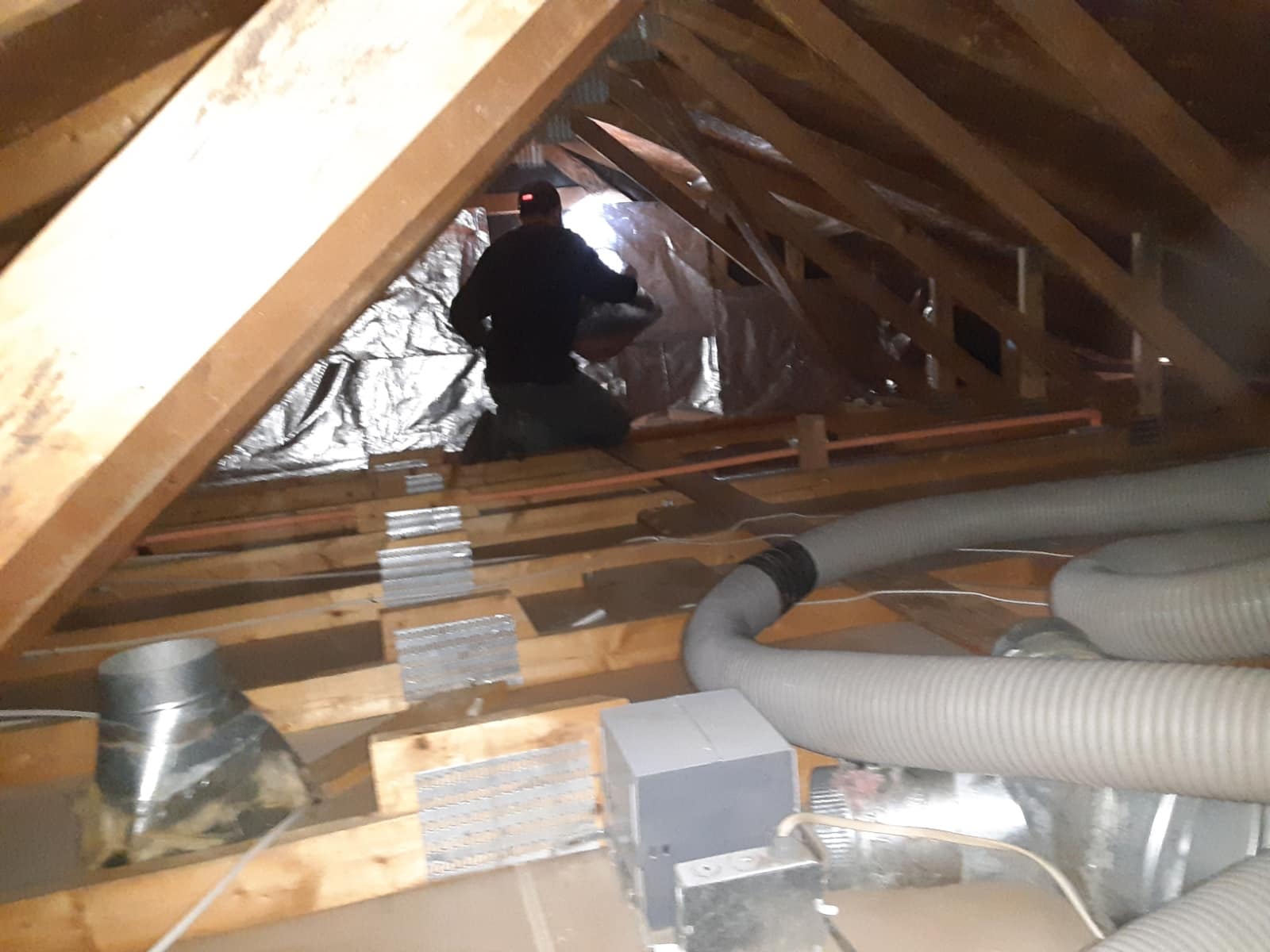Key Takeaways
1. Defective or outdated insulation leads to high energy bills, poor temperature control, and health hazards such as mold or pests.
2. Ceiling insulation requires replacement between 15 to 30 years, or earlier if it is damaged or infested.
3. Proper removal of insulation requires the use of personal protective equipment, HEPA vacuuming, and proper disposal in accordance with local regulations.
4. Removing the insulation yourself can be hazardous, especially if spray foam was used, as it may contain mold and asbestos. It is safer and more efficient to hire a contractor.
5. Upgrade old insulation with new eco-friendly insulation during the installing process to improve comfort, energy efficiency, and property value.
Most of the time, homeowners are unsure whether their home’s ceiling insulation is functioning correctly or not. Here’s how to ensure it, along with a checklist to help.
Did you know? The U.S. Department of Energy states that installing good insulation in the attic and ceiling can save up to 10% on energy costs. However, if your insulation is old or damaged, it’s likely doing more harm than good. That’s when ceiling insulation removal becomes necessary, not just a choice.
In this guide, we will provide a checklist to help you determine whether you need an insulation replacement or not. So, stay tuned!
When Should You Consider Insulation Removal
Old or broken insulation isn’t just useless; it’s also dangerous. Here are some important signs that you might need to hire insulation replacement services:
- Your energy bills keep going up, but you don’t know why.
- In the summer, rooms are too hot, and in the winter, they are too cold.
- There are water stains or mold on the ceiling.
- You can hear rodents running around in the attic.
- Your house smells musty.
Understanding the Basics Before You Remove Ceiling Insulation
Even before diving into safe insulation removal, it’s good to know what you’re dealing with. Different types of insulation need different handling:

Each material comes with its pros and cons. But removal of old insulation becomes vital once its structure or effectiveness breaks down.
Signs It’s Time for Attic Insulation Removal
Changes to the ceiling insulation often occur simultaneously along with the attic insulation removal. This is when you should do something:
Unwanted guests in the Attic
Old insulation is a favorite place for bugs and rodents to live. Your attic needs attention right away if you notice droppings, nesting, or unusual noises.
Dampness and color change
Water damage is when insulation has stains or soft spots. Moisture reduces the effectiveness of insulation and promotes mold growth.
Old Age of Insulation
If it is more than 20 years old, it is likely that it no longer meets energy standards.
Safe and Efficient Approach to Insulation Removal
It’s not enough to just rip out batts and call it a day when it comes to safe ceiling insulation removal. You need a good plan to keep your home and health safe.
Here’s a short list:
- Put on gloves, masks, and goggles to protect yourself.
- Seal off the work area to keep dust and mold from spreading.
- Use HEPA vacuums to get rid of dirt.
- Follow local regulations when disposing of items.
Pro Tip: If you suspect mold or asbestos, don’t attempt to fix it yourself; call a professional.
DIY or Call for Insulation Replacement Services?
We understand that DIY looks cheap. But there are times when it makes more sense to hire a professional:
- You have spray foam insulation, which needs professional tools.
- There is a risk of asbestos (which is common in homes built before 1980).
- You want results that are quick, clean, and easy to achieve.
- There are bugs or mold in your insulation.
Professionals like My Insulation Guy have the tools and knowledge to do the job right, safely, and with minimal trouble.
What to Do After Old Insulation Removal
Don’t stop after the old insulation removal is done. You have a blank slate now.
Consider these Steps Next:
- Check the structures in the attic and on the ceiling for damage.
- Seal air leaks to keep drafts out.
- Put in new insulation that is good for the environment and saves energy.
- Look for leaks or damage in the HVAC ducts.
Modern insulation materials are more effective than older ones and can also increase the value of your home.
The Ultimate Ceiling Insulation Removal Checklist
Here’s your list of things to do:
- Are your energy bills going up?
- Are there mold or water stains that you can see?
- Is your insulation more than 15 to 20 years old?
- Are there mice or other pests in the attic?
- Your rooms don’t stay at the right temperature?
- Is there a musty smell in your house?
- You want to switch to insulation that is better for the environment?
If you’ve checked even two, it’s time to take action.
Don’t Let Old Insulation Drain Your Comfort!
Are you still unsure if your ceiling insulation is working? If you’ve noticed things like high energy bills, musty smells, or temperatures that aren’t even, it’s probably time to make a change.
Ceiling insulation removal isn’t just a maintenance task; it’s a good way to make your home more comfortable, improve the air quality, and save energy.
My Insulation Guy offers safe, professional, and reliable insulation removal services that are tailored to your needs, whether you need to remove old insulation, attic insulation, or plan for a complete upgrade. For more detailed insights, visit our website or contact us.
FAQs
Q1: How often should you change the insulation in your ceiling?
Most types last between 15 and 30 years. If it’s broken, moldy, or not energy-efficient anymore, get a new one.
Q2. Is it messy to take out insulation?
It can be, but professionals use sealed vacuums and barriers to keep your home clean while they work.
Q3: Is it possible for me to take out the attic insulation?
You can try it if there aren’t any mold or bugs in it. But it’s best to hire professionals for older homes or materials that are dangerous.
Q4: What is the safest way to get rid of old insulation?
Put it in plastic bags and follow your area’s rules for hazardous waste. Don’t discard it or burn it without a thought.
Q5. Does putting in new insulation really lower energy bills?
Of course. Good insulation keeps heat in during the winter and out during the summer, which saves a lot of money on energy.

